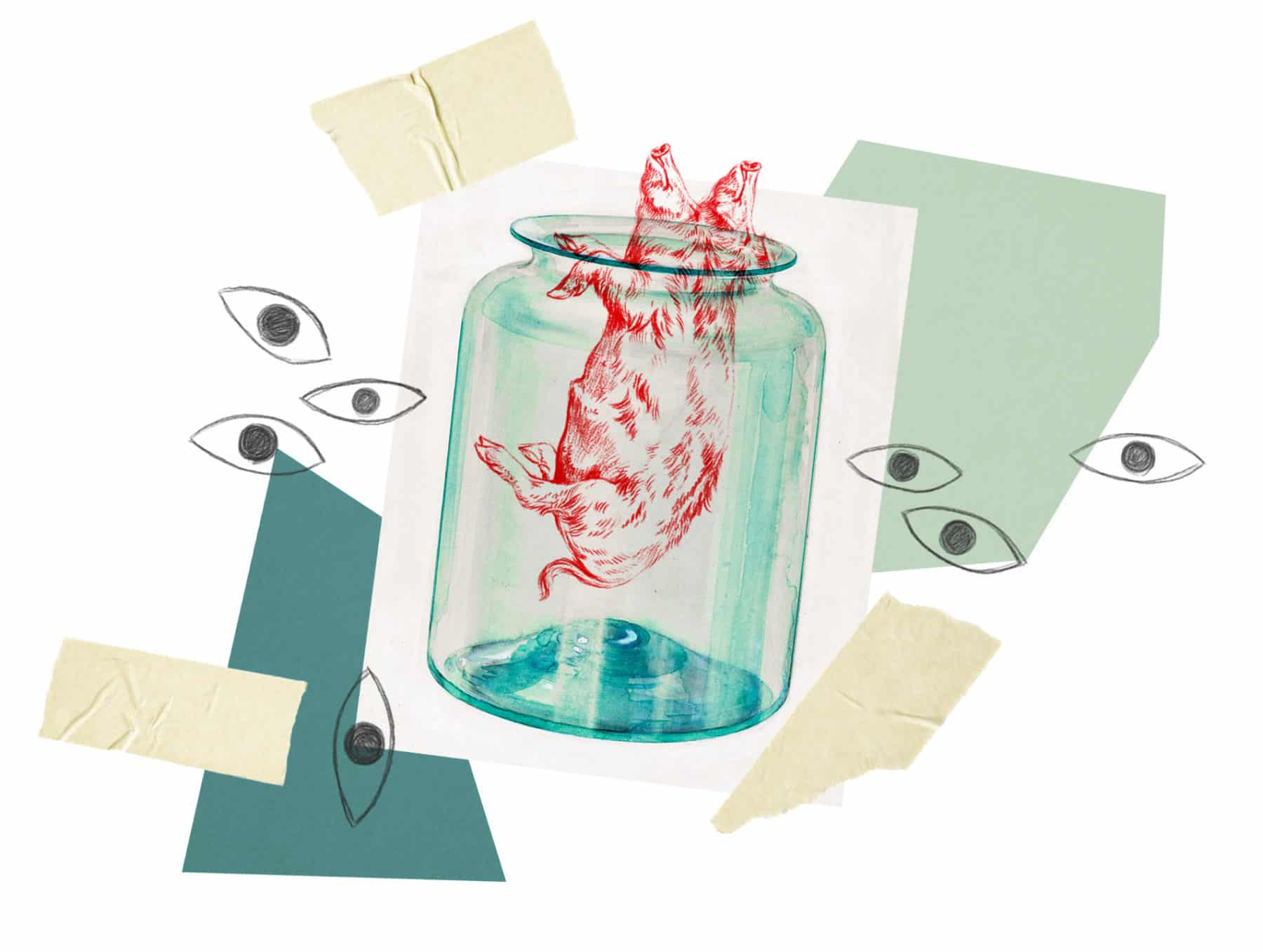Let’s say I was twelve, though thirteen or ten is just as likely. Our class waded across a dark shed in Wisconsin, past spotlit jars and a hand-carved sign: Nature’s Oddities. I remember little else of the field trip, but the pig travels with me, pickled and intact.
Let’s say its four eyes were open, though of course they would have been closed. Pale flesh bloated and stretched by the convexity of the jar. Growing apart from itself in a prophecy I felt but did not yet understand—tiny sybil for the coming teenage gods.
I say sybil, but at times the dear unborn beastie is shrapnel, lodged in the meat of me as I move. I barely think of it until I wrench the sinews of my memory a certain way and feel them scrape against something metallic and undissolved. An ache, though not unwelcome.
Or maybe the ache is in that other place—not the memory, but the stygian chamber beneath. Shame at the looking, at the wanting to look. Shame at the bare display, at the pressed-curd smell of the boys around me, their gangling fingers hooked forward to tap the glass. (Weren’t those burl-knuckled probes always poking, gripping, claiming? And didn’t I wish for a sheet to pull over the jar?) I knew to hide this from them, but I felt sorry for the pig. I felt sorry for everything then—suffered every gust. I was thrumming and skinless, crossing the chasm of each day in a flame of woe and wonder.

Why a fetal pig and not another of a million forgotten moments? Why this particular witness to my passage through the gates of childhood? I have bronzed the creature into the statue hall of formative memories, a place I visit like a superstitious tourist compelled to rub a shine on Harvard’s foot, Lincoln’s nose, Sinnataggen’s left hand, Juliet’s right breast. A self, in truth, is a story, so I make my laps, touch one figure and the next. In this way, I carry out my duty to specify and assemble my self—to snip something concrete from the allure of infinite possibilities.
Each split cell is an opportunity for deviation—which is to say, creativity. There were other jarred and taxidermied creatures in that shed (that’s the thing about endless forms), so the pig was not alone. But of course, it never could be. Blurring to plural, both it and they: what a powerful being, to break language so.
The two-headed fetal pig was stolen from the museum in 1999, missing for weeks, found beside a hiking trail. I had left Wisconsin by then, and I don’t know how I heard of it, but I remember two things: that the theft felt like a validation to me, a confirmation of the animal’s wincing allure, and that when interviewed about it for the local paper, the sheriff said, “Is nothing sacred?”
Start Sunday morning with a flash essay in your inbox. Enjoy short works hand-selected from the Creative Nonfiction, Brevity, Diagram, River Teeth, and Sweet Literary archives, as well as the occasional original work.
Join the Mailing List
